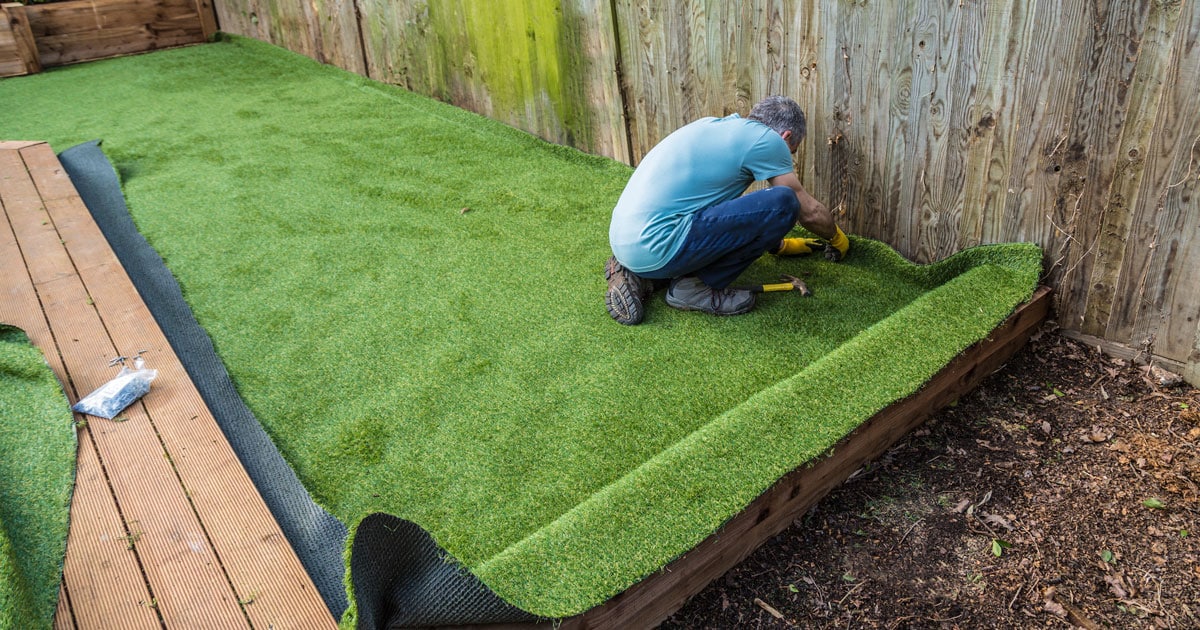How To Use Quality Underlay For Artificial Grass In Vista?
 Artificial grass has become a popular choice for lawns, playgrounds, and sports fields due to its low maintenance and aesthetic appeal. However, to ensure the longevity and performance of artificial grass, using quality underlay is crucial. Underlay provides stability, cushioning, and drainage for the artificial turf, enhancing its overall durability and comfort. Here are five essential tips for using quality underlay for artificial grass installation:
Artificial grass has become a popular choice for lawns, playgrounds, and sports fields due to its low maintenance and aesthetic appeal. However, to ensure the longevity and performance of artificial grass, using quality underlay is crucial. Underlay provides stability, cushioning, and drainage for the artificial turf, enhancing its overall durability and comfort. Here are five essential tips for using quality underlay for artificial grass installation:
- Selecting the appropriate underlay is paramount to the success of your artificial grass installation. Different types of underlays cater to specific needs such as drainage, cushioning, or stability. For instance, if you live in an area with heavy rainfall, opt for an underlay with excellent drainage properties to prevent waterlogging and potential damage to the turf. Conversely, if you’re installing artificial grass in a playground or sports field, prioritize underlays with superior shock absorption to minimize the risk of injuries.
- Proper installation of the underlay is as crucial as choosing the right type. Ensure that the underlay is laid out evenly, without any wrinkles or folds that could affect the smoothness of the artificial turf surface. Additionally, secure the underlay firmly to the ground to prevent shifting or movement, which can compromise the integrity of the installation over time. Following manufacturer guidelines and seeking professional assistance if needed can guarantee a seamless installation process.
- Investing in a durable underlay may require a slightly higher upfront cost but proves cost-effective in the long run. High-quality underlays are designed to withstand heavy foot traffic, UV exposure, and fluctuating weather conditions without deteriorating quickly. Opting for a resilient underlay ensures that your artificial grass retains its lush appearance and functionality for years to come, minimizing the need for frequent replacements or repairs.
- When selecting underlay for artificial grass, consider its environmental impact. Choose underlays made from recycled materials or those that are recyclable at the end of their lifespan to minimize ecological footprint. Additionally, prioritize underlays that are free from harmful chemicals and toxins, promoting a safe and eco-friendly environment for both humans and pets.
- Proper maintenance and periodic inspection of the underlay are essential for prolonging its lifespan and preserving the quality of your artificial grass. Remove debris, leaves, and organic matter from the surface regularly to prevent clogging of drainage channels and maintain optimal drainage efficiency. Inspect the underlay for any signs of damage, such as tears or punctures, and address them promptly to prevent further deterioration and potential issues with the artificial turf.
FAQs
How Do I Know Which Type Of Underlay Is Suitable For My Artificial Grass Installation?
Assess your specific requirements such as drainage needs, intended usage (e.g., residential lawn, playground, sports field), and environmental factors (e.g., climate, UV exposure) to determine the most suitable underlay type. Consulting with experts or manufacturers can also provide valuable guidance in selecting the right underlay for your project.
Can I Install Artificial Grass Without Using Underlay?
While it’s possible to install artificial grass without underlay, using underlay offers numerous benefits such as improved drainage, cushioning, and stability, which enhance the performance and longevity of the artificial turf. It’s highly recommended to use quality underlay for optimal results.
How Often Should I Inspect And Maintain The Underlay For Artificial Grass?
Regular inspection and maintenance of the underlay are essential to ensure its longevity and functionality. Aim to inspect the underlay at least once every few months, especially after heavy rainfall or extreme weather conditions. Perform routine maintenance tasks such as debris removal and surface cleaning as needed to keep the underlay in top condition.
Conclusion
Quality underlay is the foundation of a successful artificial grass installation, providing stability, cushioning, and drainage essential for optimal performance and longevity. By following these five tips and prioritizing proper selection, installation, and maintenance of underlay, you can ensure a lush, resilient artificial grass surface that enhances the aesthetics and usability of your outdoor space for years to come. For more information, contact Artificial Turf Vista at (760) 316-1167.
